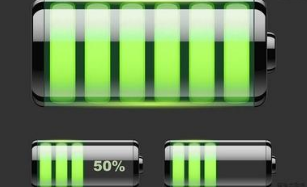Most electric vehicles equipped with lithium-ion batteries are designed to limit the full use of their battery capacity. Instead, a small amount of energy is always reserved as a buffer to protect the battery and extend its lifespan. This is commonly reflected in the vehicle's spec sheet, such as "60kWh (55kWh available)" or similar notations.
If you pay close attention, you'll notice that all lithium-ion powered EVs leave some energy unused. This is done intentionally for several important reasons. The idea is to maintain the health of the battery over time and ensure reliable performance throughout the vehicle’s lifetime.

In fact, there are three main reasons behind this design choice. First, the cycle life of a lithium battery increases significantly when the depth of discharge (DoD) is reduced. At deeper discharges, the battery degrades faster due to increased stress on its internal components.
For example, the Winston Battery 100 Ah LFP specification shows that at 80% DoD, the battery can last around 5,000 cycles, but at 70% DoD, it can reach up to 7,000 cycles. This clearly demonstrates how limiting the depth of discharge helps preserve battery longevity.
Second, as the battery’s state of charge decreases, its internal resistance tends to increase. When the battery is deeply discharged, this resistance becomes more pronounced. With a constant current draw, the battery must supply more power, which results in energy loss in the form of heat—reducing efficiency and potentially damaging the battery over time.
Third, the voltage curve of a lithium battery is relatively flat during normal discharge. However, when the battery is pushed to a deep discharge, the voltage drops more rapidly. By limiting the depth of discharge, the battery maintains a more stable output, giving users better control over their remaining range and improving overall driving experience.
It's also worth noting that limiting the depth of discharge is different from battery upgrades. For instance, Tesla Model S owners with 60 kWh or 70 kWh batteries can sometimes unlock additional capacity through software updates, effectively increasing the usable range. Even after an upgrade, the battery still retains a safety buffer to protect its long-term health.
So, the question remains: does a non-upgraded 60 kWh battery in the Model S have a longer lifespan compared to one that has been upgraded? While it's possible that limiting the DoD could contribute to a longer life, other factors like usage patterns, charging habits, and environmental conditions also play a significant role. Ultimately, manufacturers carefully balance performance, safety, and durability when designing these systems.
FTTH Node,passive optical node,active optical node,ftth node with wdm,mini optical receiver
Shenzhen Runtop Technology Co.LTD , https://www.runtoptech.com